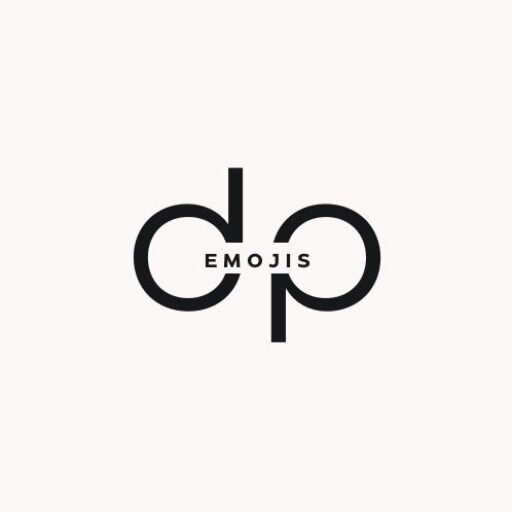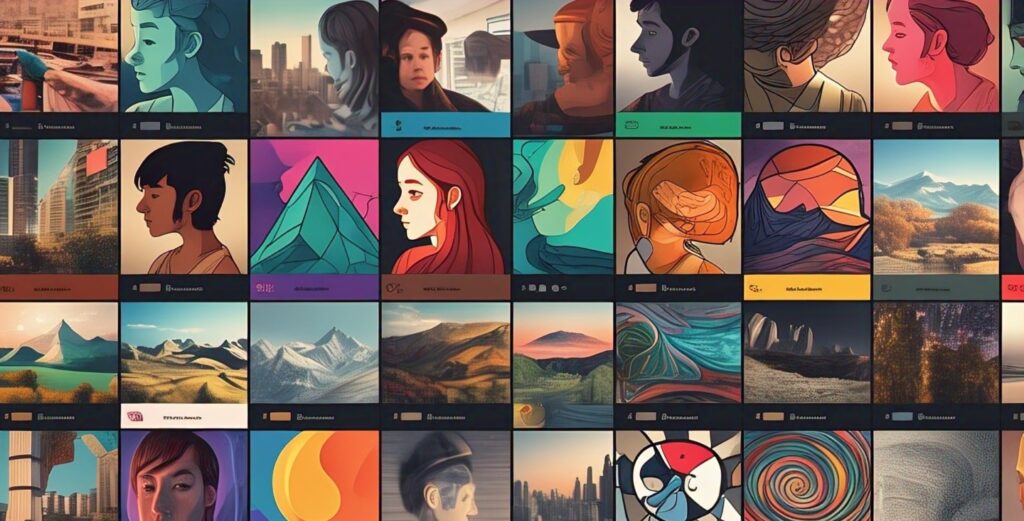In today’s digital landscape, profile pictures serve as powerful first impressions that communicate personality, values, and identity across social media platforms. Understanding the various types of profile pictures people choose reveals fascinating insights into human psychology and digital self-presentation. From professional headshots to creative avatars, each profile picture category tells a unique story about its user’s priorities, personality traits, and social media goals.
The psychology behind profile picture selection goes deeper than simple aesthetic preferences. Research indicates that these digital representations significantly impact how others perceive us online, influencing everything from professional opportunities to social connections. Whether someone opts for a traditional portrait, group photo, or abstract image, their choice reflects deliberate or subconscious messaging about their digital identity.
The Professional Headshot: Building Trust and Credibility
Professional headshots represent the most common and widely accepted type of profile picture across all social media platforms. These images typically feature a clear, well-lit photograph of the person’s face, often taken against a neutral background with professional lighting and composition.
Research consistently shows that profile pictures featuring close-ups with visible eyes looking at the camera make the strongest first impression. The psychological impact of eye contact, even in photographs, triggers trust-building mechanisms in viewers’ brains. Professional headshots work particularly well on LinkedIn, where they convey competence and approachability to potential employers, colleagues, and business partners.
The Casual Selfie: Authenticity Meets Accessibility
Selfies have revolutionized how people present themselves online, offering an accessible way to create profile pictures without professional photography. This category includes everything from carefully curated bathroom mirror shots to spontaneous outdoor selfies that capture natural expressions and environments.
Studies demonstrate that individuals using self-photographs as profile pictures report higher levels of life satisfaction compared to those using other types of images. This correlation suggests that selfies may reflect confidence and self-acceptance, though they also require careful consideration of lighting, angles, and background elements to maintain professionalism when needed.
Group Photos: Social Connection and Context
Group profile pictures showcase the user within their social circle, whether featuring family members, friends, romantic partners, or professional colleagues. These images communicate that the person values relationships and enjoys social interaction, though they can sometimes create confusion about which individual the profile represents.
The challenge with group photos lies in clarity and recognition. While they effectively demonstrate social connectivity, viewers may struggle to identify the profile owner, potentially diminishing the image’s effectiveness for networking or dating applications. Strategic cropping or positioning can help maintain the social element while ensuring the profile owner remains clearly identifiable.
Pet and Animal Companions: Emotional Connection and Values
Pet-focused profile pictures have become increasingly popular across all demographics and social platforms. These images range from solo pet portraits to photos featuring the owner with their animal companion, often conveying messages about nurturing, loyalty, and lifestyle priorities.
While pet photos demonstrate love and care, they can sometimes overshadow the person’s identity, with viewers potentially focusing more on the animal than the profile owner. For personal social media accounts, pet photos often work well, but professional contexts may benefit from images that maintain human faces as the primary focus.
Creative and Artistic Expressions: Personality and Interests
Artistic profile pictures encompass illustrations, digital art, logos, abstract designs, and creative photography that moves beyond traditional portraiture. These images allow users to express creativity, showcase artistic skills, or communicate specific interests and values through visual metaphors.
Creative profiles work particularly well for artists, designers, and creative professionals who want to demonstrate their aesthetic sensibilities and artistic capabilities. However, they may reduce perceived trustworthiness in professional contexts where human connection and recognition are priorities.
Lifestyle and Activity Shots: Passion and Identity
Lifestyle profile pictures capture users engaging in hobbies, sports, travel, or other meaningful activities. These images might show someone hiking, playing music, cooking, or participating in sports, effectively communicating personal interests and active lifestyle choices.
While passions and hobbies are important, profile pictures aren’t always the ideal place to showcase them, as faces leverage unique cognitive biases that build stronger connections. The most effective lifestyle shots maintain facial visibility while incorporating meaningful activities in the background or context.
Blank or Default Avatars: The Psychology of Absence
Some users choose to maintain default avatars or completely blank profile spaces, either temporarily or permanently. This choice can stem from privacy concerns, indecision, technical difficulties, or deliberate minimalism.
Empty profile pictures create powerful messages, sometimes suggesting privacy concerns or lack of engagement with the platform. While blank avatars protect personal information, they may also reduce trust and engagement from other users who prefer to interact with identifiable individuals.
Cartoon and Anime Characters: Digital Identity and Fandom
Cartoon character profiles, including anime avatars, video game characters, and popular culture references, allow users to express fandoms and create idealized digital identities. These choices often appeal to younger demographics and gaming communities.
Many users regularly change their profile pictures to reflect current interests, with anime and manga artwork being particularly popular choices. While these images can build connections within specific communities, they may limit professional networking opportunities and reduce perceived authenticity in formal contexts.
Logo and Brand Representations: Business and Organizational Identity
Business logos, brand symbols, and organizational emblems serve as profile pictures for companies, nonprofits, and professional services. These images prioritize brand recognition over personal connection, making them ideal for official business accounts.
Effective logo profile pictures require careful consideration of scalability, recognizability at small sizes, and consistency across multiple platforms. The challenge lies in creating visual identity that works equally well as a tiny circular thumbnail and a larger display image.
Motivational and Quote-Based Images: Values and Inspiration
Text-based profile pictures featuring inspirational quotes, personal mottos, or value statements allow users to communicate beliefs and motivational messages. These images often combine typography with background designs or photographs.
While quote-based profiles can effectively communicate values and personality, they sacrifice the human connection that faces provide. They work best when combined with occasional updates featuring actual photographs of the profile owner.
The Psychology Behind Profile Picture Choices
Research reveals that personality traits significantly influence profile picture selection, with agreeable people displaying more positive emotions and brighter colors, while conscientious individuals choose more natural, colorful, and bright images. Understanding these psychological patterns helps explain why certain profile picture types resonate with specific personality types and social goals.
Each social platform carries different meanings and attempts to convey different messages through profile pictures. LinkedIn profiles typically emphasize professionalism and competence, while Instagram allows for more creative and lifestyle-focused presentations. Facebook often balances personal and professional elements, requiring profile pictures that work across diverse social contexts.
Platform-Specific Considerations and Optimization
Different social media platforms have unique requirements, audience expectations, and technical specifications that influence optimal profile picture selection. Understanding these platform-specific nuances ensures maximum effectiveness across various digital environments.
LinkedIn prioritizes professional headshots that build trust and credibility among business connections. The platform’s audience expects clear, well-lit photographs that facilitate professional networking and career opportunities. Creative or casual images may reduce perceived professionalism and limit career advancement possibilities.
Instagram supports more creative and lifestyle-focused profile pictures, allowing users to express personality through artistic photography, creative compositions, and lifestyle shots. The platform’s visual nature encourages aesthetic experimentation while maintaining recognizability for social connections.
Technical Optimization and Best Practices
Successful profile pictures require technical optimization to ensure quality display across devices and platform specifications. Most social media platforms display profile pictures in circular formats, requiring careful composition and cropping to maintain effectiveness.
Square aspect ratios (1:1) work best for most platforms, preventing unwanted cropping or distortion during automatic formatting. High resolution images ensure clear display on various devices, from small smartphone thumbnails to larger desktop presentations. File size optimization maintains quick loading times while preserving visual quality.
Lighting considerations significantly impact profile picture effectiveness. Natural lighting typically provides the most flattering results, while harsh shadows or overexposure can reduce image quality and viewer appeal. Consistent lighting across the face ensures even exposure and professional appearance.
Cultural and Demographic Factors
Profile picture preferences vary significantly across cultural backgrounds, age groups, and geographic regions. Understanding these demographic patterns helps explain different approaches to digital self-presentation and social media engagement.
Younger demographics often embrace creative experimentation, frequently changing profile pictures to reflect current interests, moods, or social trends. Older users typically prefer consistency and professional presentation, maintaining stable profile images that facilitate recognition and trust-building.
Cultural factors influence privacy expectations, professional presentation standards, and social media engagement patterns. Some cultures emphasize individual presentation, while others prioritize group identity and family connections through profile picture choices.
Impact on Social Media Engagement and Networking
Profile picture selection directly influences social media engagement rates, networking opportunities, and overall platform success. Research demonstrates that certain image types generate more likes, comments, and connection requests than others.
Faces are uniquely powerful imagery that leverage cognitive biases built into human brains, making portrait-style profile pictures consistently more effective for engagement and recognition. However, context and platform audience must guide specific selection decisions.
Professional networking platforms reward traditional headshots with increased connection acceptance rates and business opportunities. Social platforms may respond better to lifestyle shots and creative presentations that demonstrate personality and interests.
Future Trends and Evolving Standards
Digital profile presentation continues evolving alongside technology improvements, platform updates, and changing social expectations. Emerging trends include increased video integration, augmented reality filters, and AI-enhanced photography options.
Video profile pictures are becoming more common, allowing dynamic presentation that showcases personality through movement and sound. These animated profiles require careful consideration of appropriateness for different platforms and professional contexts.
Augmented reality filters and digital enhancement tools offer new creative possibilities while raising questions about authenticity and realistic representation. Balancing creative expression with genuine self-presentation remains an ongoing challenge for social media users.
Conclusion
Understanding the various types of profile pictures people use reveals the complex psychology behind digital self-presentation and social media engagement. From professional headshots that build trust and credibility to creative expressions that showcase personality and interests, each profile picture type serves specific purposes and communicates distinct messages to viewers.
The most effective profile pictures align with platform expectations, audience demographics, and personal goals while maintaining authenticity and recognition. Whether prioritizing professional networking, social connection, or creative expression, successful profile picture selection requires careful consideration of psychological impact, technical optimization, and cultural context.
As social media platforms continue evolving and digital communication becomes increasingly visual, profile picture psychology will remain a crucial factor in online success and meaningful connection building. Users who understand these principles and adapt their digital presentation accordingly will be better positioned to achieve their social media objectives and build lasting online relationships.




